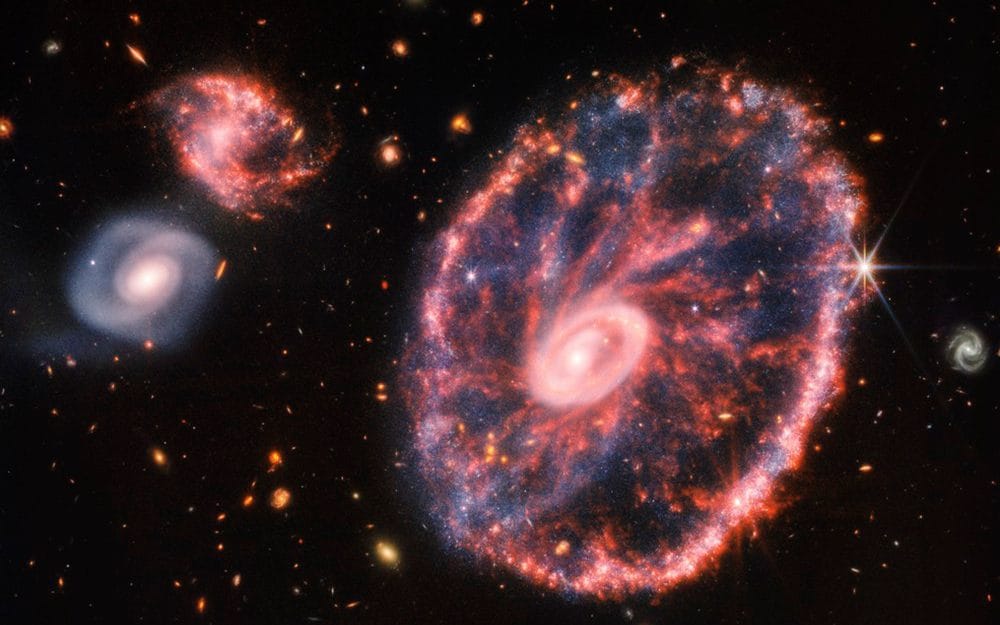
NEWLY released images from the James Webb Space Telescope have been released showing parts of the universe pictured in groundbreaking detail.
The instrument, which uses a type of technology largely designed in Scotland, showed off the Cartwheel Galaxy, a rare ring galaxy.
The star system formed as a result of a collision between a large spiral galaxy and another smaller galaxy.
High-precision instruments within the telescope managed to make out individual stars and star-forming regions within the Cartwheel.
The new details will help astrologists better understand star formation within the universe.

Scottish scientists were celebrating last month when the first images from the James Webb Space Telescope were transmitted back to earth.
The instrument is the largest and most powerful telescope ever launched into space and is the culmination of more than 20 years of work and scientific innovation.
The astonishing images revealed the power of Webb, showing 17 different instrument “modes” and the possibilities these offer for observing and studying the cosmos.
The UK’s main contribution to Webb is the Mid-Infrared Instrument (Miri), one of four scientific instruments on board.

Most of the pictures from Webb include images or spectra captured by Miri, demonstrating the instrument’s ability to see the redshifted light of distant galaxies, newly forming stars and planets.
Much of the design and build of Miri took place in Scotland, led by Hamilton-born scientist Professor Gillian Wright MBE in her role as European Principal Investigator and as director at the UK Astronomy Technology Centre (UK ATC) based at the Royal Observatory in Edinburgh.
Reacting to the first pictures in July, Professor Wright said: “It is rare in science to make the revolution in capability that is provided for mid-infrared astronomy by Miri on Webb.

"It is an honour and a pleasure to have led the MIRI team in this achievement, and first and foremost I would like to thank everyone who has contributed along the way to make this possible.
“The amazing images are truly stunning and demonstrate the new and unique view of the Universe that Miri provides.
"These images and spectra would not have been possible without the international collaboration between the many Miri partners and stakeholders along with the fantastic work of the Webb team to build this powerful new observatory.
"With congratulations to all concerned, I am looking forward excitedly to the many discoveries that will come from Miri.”

Webb’s mission to explore the Universe is led by NASA, the European Space Agency (ESA) and the Canadian Space Agency.
The MIRI development has been funded by the UK Space Agency and STFC, with UK Government funding, and ESA.
Webb launched on Christmas Day 2021 before travelling 1 million miles.
The last few months have been spent cooling down the instruments to operational temperatures, aligning the mirrors and testing all the instruments as they come online.
A team of scientists, engineers and astronomers from UK ATC travelled from Scotland to the Space Telescope Science Institute in Baltimore so they could be actively involved in this complex and painstaking commissioning process.







